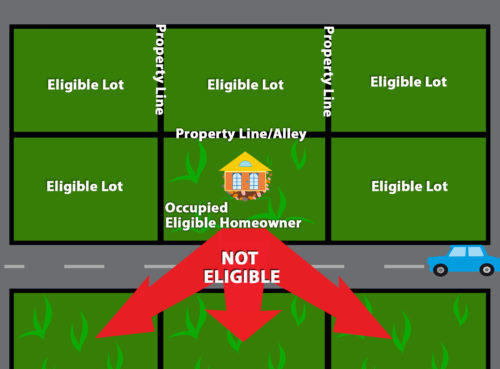Photos courtesy of Getty Images
Since launching the Side Lot program in 2014, the Detroit Land Bank Authority (DLBA) has sold more than 21,000 vacant lots to Detroit homeowners, which is more than other cities across the country.
The DLBA is invested in rehabbing vacant and blighted buildings, returning them to productive use. Residents can direct their inquiries into acquiring home and land ownership opportunities to this overseeing body.
Side lots are defined as residential vacant lands without a structure. The lot must be “adjacent to the applicant’s occupied property on the left side, right side, rear or diagonally behind (even across an alley, but not across the street).”
The criteria for eligible side lots include the land must measure 7,500 square feet or less and it must not measure more than 300 linear feet on any side.
Oversized lots that exceed these measurements are priced at $200 and accessory structures are priced at $250.
Vacant Lot Rehab Improves Community Health
According to a 2011 study published in the American Journal of Epidemiology, a team at the Perelman School of Medicine at University of Pennsylvania reported “in a decade-long comparison of vacant lots and improved vacant lots, that greening was linked to significant reductions in gun assaults across most of Philadelphia and significant reductions in vandalism in one section of the city.”
Philadelphia, much like Detroit, has a comparable history of a manufacturing-led industry and surveys of economic disparities and shared issues with blight.

“Improving the places where people live, work and play, holds great promise for changing health and safety,” said Charles Branas, PhD, associate professor of Epidemiology. “Greening vacant lots is a low-cost, high-value approach, which may prevent certain crimes and encourage healthy activity for more people and for longer periods of time than many other approaches.”
The researchers found a cleaned up, green lot serves several functions for residents to plan community gatherings, which decrease “the opportunity for crowd-based nuisance crimes such as disorderly conduct.”
The Michigan Chronicle talked to Antonisha Smith, a spokesperson for Detroit Land Bank Authority. We asked how has the Side Lot program sales contributed to blight abatement and beautification in the city?
Smith replied that, “The DLBA runs several programs, including Auction, Own It Now, and Nuisance Abatement, to acquire abandoned, often privately owned, vacant lots and provide support services for new landowners to renovate the lots.”
She added that since 2014, the effort of these programs has “generated more than 7,300 successful buyer-driven completed home renovations, with an additional 7,500 currently underway.”
Side Lots are made available exclusively to adjacent neighbors for 180 days. After this period, the side lots will be eligible for sale to interested buyers through other Land Reuse Programs.
DLBA reports that a post-sale survey shows 72 percent of its home buyers are Detroit residents.
According to Smith there are currently approximately 12,500 side lots still available for purchase by residents.
For other land and purchaser criteria, the DLBA provides a list of requirements on the Amended and Restated Vacant Land Policy.
For residents interested in purchasing a side lot, visit buildingdetroit.org/sidelots for more information.